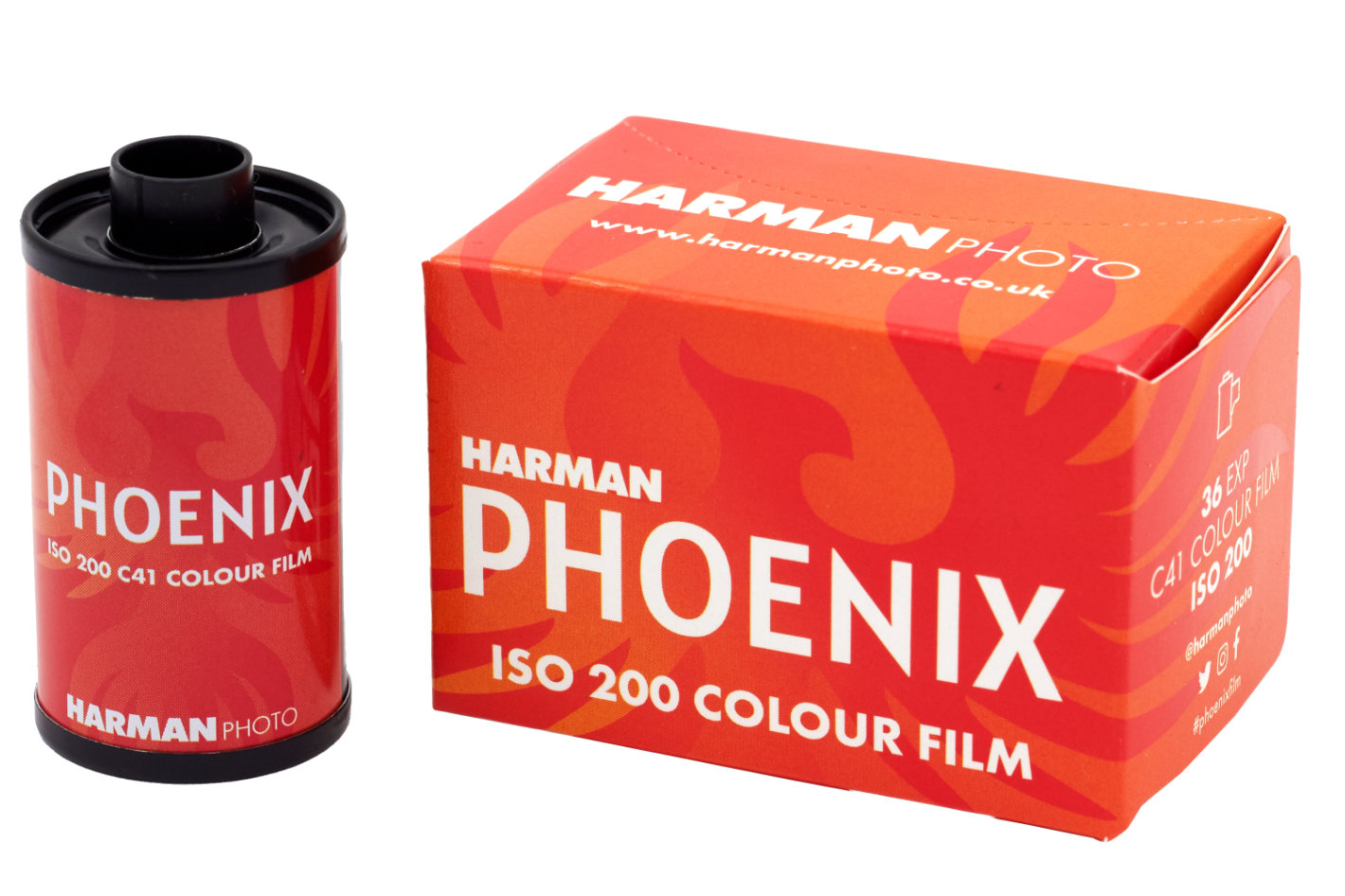
One important note before we continue: HARMAN Phoenix is an experimental, limited-edition film and the first step on HARMAN Photo colour journey. Those who wish to try it should understand the request from the company behind the product, who says: please embrace this film for all its quirks and differences. We’d love for you to be part of this journey and help to create the future colour films that you want to see by sharing your feedback.
You may not be familiar with the name, and may even imagine this is some new company trying its hand at film emulsions… but you would be completely wrong. HARMAN Photo is a trading name of HARMAN technology Ltd, one of the world’s largest manufacturers of analogue photographic films, darkroom papers, and photo chemicals. The company was formed in 2005 by former managers of ILFORD Imaging UK, and takes its name from Alfred Harman, founder of the original ILFORD company in 1879.
At the same time, the company also acquired the facilities in Mobberley, England, the traditional home of their black & white photographic products since 1983, ensuring their ongoing production and survival. HARMAN technology Ltd was acquired by Pemberstone Ventures Ltd in 2015 and is now a pioneering imaging specialist blending the traditions of manufacturing excellence with a passion and commitment to its customers and the future of analogue film photography.
Through significant ongoing investment, and backed by a world-class R&D function, a commitment to innovation, and a unique portfolio of equipment, facilities, and expertise, it is one of the world’s last remaining companies capable of the full end-to-end process of developing, coating, and finishing high quality analogue photographic products.
Today, the company manufactures millions of units of film, paper, and chemicals under the HARMAN Photo, ILFORD Photo and KENTMERE ranges and ships these around the world and into the discerning hands of beginners, enthusiasts, students, and professional film photographers as well as leading labs, classrooms, and darkrooms.
While Ilford is the most iconic analogue brand available today, it leans back on its analogue black-and-white heritage. Harman Photo takes a leap forward in to the modern era with a brand-new line-up of color film suitable for beginners and seasoned professionals alike. The company is proud to reveal that the film is produced entirely by Harman Technology and manufactured by them in Mobberly, UK in the same facility where Ilford’s black and white products are manufactured.
Still, this is new ground and Harman Photo clearly says that “making colour films is very different to black & white and while we have made good progress, we recognise we have a lot more to learn”, and that explains the warning note issued with the release of the new emulsion.
The first ever colour film fully made in Mobberley. from emulsion to cassette, HARMAN Phoenix 200 is a brand-new ISO 200, C41 colour negative film that is more than a film: it represents a significant yet incredibly exciting milestone, in the company’s own words. High contrast and strong, visible grain are just some of its unique traits that help to produce characterful, unmistakably analogue, results unlike any other colour film.
According to the information available, the HARMAN Phoenix 200 is a film with character that thrives best in good, even light. On brighter days or when shooting into the light, there is a risk of halation. The film is characterized by a strong visible grain and vivid greens and blues. The company adds that “it delivers punchy, vibrant colours although they react differently to different scanners and settings. Getting the exposure right will certainly help to get the best results so we suggest metering for the mid tones to retain shadow or highlight detail (over or under exposure is not Phoenix’s friend)!”
“Part of the fun of shooting film is expecting the unexpected and this film delivers exactly that from its uniquely coloured negatives to chance encounters with occasional coating anomalies. Hold back your expectations and enjoy the experience!” says HARMAN Photo, reminding me of my days shooting with Orwo’s Orwochrome, a cheap transparency emulsion, popular in the 80s, which also was special: each new batch gave new results.
Available on a 36 exposure DX coded cassette and with a box speed of ISO 200, Phoenix can be rated between ISO 100 and 400 but performs best in good, consistent light. On brighter days or when shooting into the light there is also a possibility of halation. Development is in the classic C41 process for colour negative film. The company is exploring the options to bring the emulsion in other formats, with 120 medium-format being the most obvious.
Time to dust your old 35mm analog camera
Unlike more traditional colour negative films, HARMAN Phoenix 200 does not have an orange mask. This can affect scanner response and some adjustment may therefore be required to achieve the optimum results. Harman Photo shares on its website some recommendations for best settings. The scanning settings shared were developed by HARMANLab.com in conjunction with and support from The Darkroom.com, Analogue Wonderlab, SilverPan Film Lab and Blue Moon Camera and Machine.
One final note: this emulsion will be available as a limited-edition film. HARMAN Photo says that it “has not not set a fixed date or quantity with work already underway on future generations. However, we want enough people to be able to shoot HARMAN Phoenix as the feedback and revenue generated will help steer the development of our future colour films.”
So, what are you waiting for? Find a store near you, go there and buy one or two cassettes of HARMAN Phoenix 200, dust your old 35mm analog camera and shoot. No more pixel peeping, as, apparently, the demand for analogue products continues to grow.
